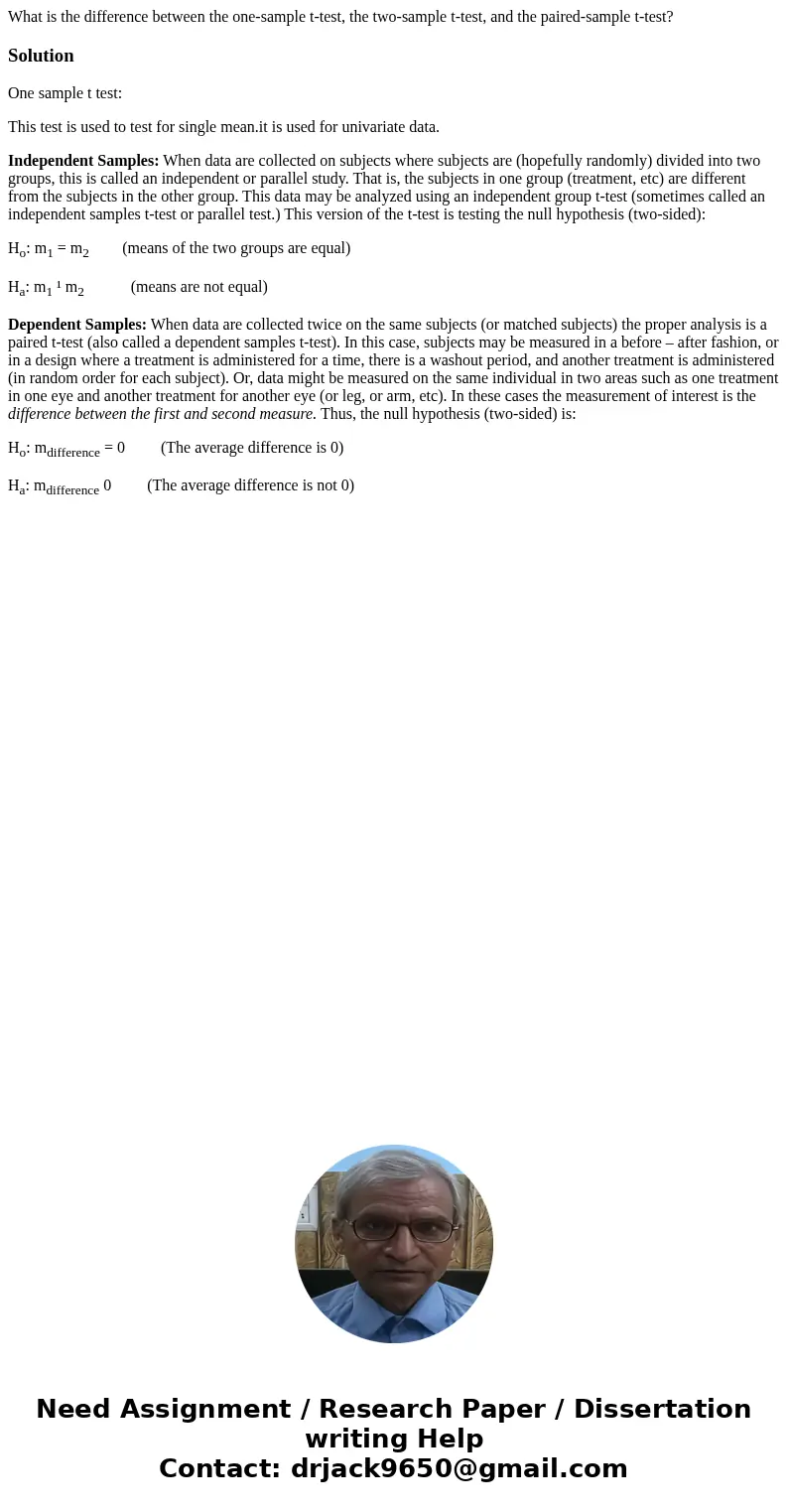What is the difference between the onesample ttest the twosa
What is the difference between the one-sample t-test, the two-sample t-test, and the paired-sample t-test?
Solution
One sample t test:
This test is used to test for single mean.it is used for univariate data.
Independent Samples: When data are collected on subjects where subjects are (hopefully randomly) divided into two groups, this is called an independent or parallel study. That is, the subjects in one group (treatment, etc) are different from the subjects in the other group. This data may be analyzed using an independent group t-test (sometimes called an independent samples t-test or parallel test.) This version of the t-test is testing the null hypothesis (two-sided):
Ho: m1 = m2 (means of the two groups are equal)
Ha: m1 ¹ m2 (means are not equal)
Dependent Samples: When data are collected twice on the same subjects (or matched subjects) the proper analysis is a paired t-test (also called a dependent samples t-test). In this case, subjects may be measured in a before – after fashion, or in a design where a treatment is administered for a time, there is a washout period, and another treatment is administered (in random order for each subject). Or, data might be measured on the same individual in two areas such as one treatment in one eye and another treatment for another eye (or leg, or arm, etc). In these cases the measurement of interest is the difference between the first and second measure. Thus, the null hypothesis (two-sided) is:
Ho: mdifference = 0 (The average difference is 0)
Ha: mdifference 0 (The average difference is not 0)

 Homework Sourse
Homework Sourse